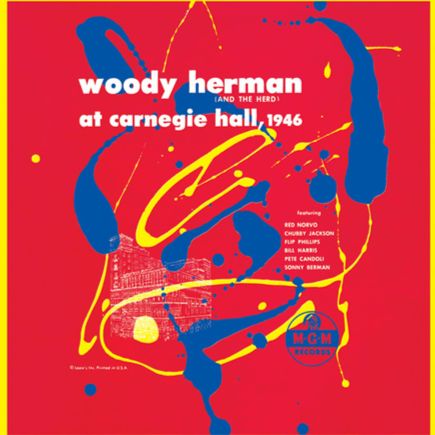Mean to Me: une ballade entre blues, chanson et jazz naissant
Composée en 1929 par Fred E. Ahlert, sur des paroles de Roy Turk, Mean to Me s’inscrit au croisement de plusieurs courants musicaux en pleine transformation. À la charnière entre la fin du ragtime et les prémices du swing, cette chanson populaire reflète les mutations esthétiques du jazz de la fin des années 1920.
Dès sa publication, Mean to Me connaît un vif succès, notamment grâce aux interprétations poignantes de Ruth Etting et Helen Morgan. La version de Ben Bernie avec la voix de Scrappy Albert, enregistrée en février 1929, est l’une des premières lectures masculines du morceau. La même année, la chanson figure aussi dans le tout premier dessin animé sonore de la série Krazy Kat, signe de sa notoriété immédiate.
Sur le plan musical, Mean to Me propose une mélodie simple mais expressive, chargée d’une mélancolie feutrée qui laisse toute sa place à l’interprétation. Les paroles de Roy Turk, centrées sur la douleur d’un amour à sens unique, confèrent à la chanson une universalité émotionnelle qui a traversé les générations.
Woody Herman, l’élégance d’un classique revisité
Le 25 mars 1946, Woody Herman et son orchestre gravent à New York une interprétation de Mean to Me. Cette version illustre l’art du clarinettiste, saxophoniste et chanteur américain, qui savait donner une nouvelle vie aux mélodies inscrites dans la tradition, en y insufflant l’énergie et la modernité caractéristiques de ses ensembles.
À cette époque, Herman dirige l’un des orchestres les plus dynamiques de la scène jazz, connu sous le nom de First Herd. Dans Mean to Me, l’équilibre entre la souplesse du chant d’Herman et la richesse des sections instrumentales met en évidence la force collective de son big band. L’arrangement, raffiné et rythmé, témoigne de sa capacité à conjuguer swing et subtilité harmonique, tout en laissant respirer l’émotion du texte.
Cet enregistrement s’inscrit dans une période charnière: la Seconde Guerre mondiale vient de se terminer, le bebop bouleverse les codes, et les grands orchestres commencent à perdre de leur suprématie économique. En 1946, le swing, toujours dominant, commence à croiser les innovations du bebop. Herman, soucieux de rester au cœur de la modernité, intègre ces influences sans perdre la cohésion orchestrale qui faisait la réputation de ses Herds.
Mean to Me: una balada entre blues, canción y jazz naciente
Compuesta en 1929 por Fred E. Ahlert con letra de Roy Turk, Mean to Me se sitúa en la encrucijada de varias corrientes musicales en plena transformación. En la transición entre el final del ragtime y los inicios del swing, esta canción popular refleja los cambios estéticos del jazz a finales de los años veinte.
Desde su publicación, Mean to Me obtuvo un notable éxito, en particular gracias a las interpretaciones conmovedoras de Ruth Etting y Helen Morgan. La versión de Ben Bernie con la voz de Scrappy Albert, grabada en febrero de 1929, fue una de las primeras lecturas masculinas del tema. Ese mismo año, la canción apareció en el primer cortometraje sonoro de dibujos animados de la serie Krazy Kat, señal de su reconocimiento inmediato.
En lo musical, Mean to Me ofrece una melodía sencilla pero expresiva, cargada de una melancolía contenida que deja espacio a la interpretación personal. La letra de Roy Turk, centrada en el dolor de un amor no correspondido, confiere a la canción una universalidad emocional que ha perdurado a lo largo de las generaciones.
Woody Herman, la elegancia de un clásico revisitado
El 25 de marzo de 1946, Woody Herman y su orquesta grabaron en Nueva York una interpretación de Mean to Me. Esta versión refleja el arte del clarinetista, saxofonista y cantante estadounidense, capaz de dar nueva vida a melodías inscritas en la tradición, insuflándoles la energía y la modernidad características de sus conjuntos.
En ese momento, Herman dirigía una de las orquestas más dinámicas de la escena jazzística, conocida como el First Herd. En Mean to Me, el equilibrio entre la flexibilidad del canto de Herman y la riqueza de las secciones instrumentales pone de relieve la fuerza colectiva de su big band. El arreglo, refinado y rítmico, demuestra su capacidad para conjugar swing con sutileza armónica, dejando al mismo tiempo espacio a la emoción del texto.
Esta grabación se sitúa en un período decisivo: la Segunda Guerra Mundial acababa de concluir, el bebop transformaba los códigos y las grandes orquestas comenzaban a perder su supremacía económica. En 1946, el swing, aún dominante, empezaba a cruzarse con las innovaciones del bebop. Herman, deseoso de permanecer en el centro de la modernidad, integró estas influencias sin renunciar a la cohesión orquestal que cimentaba la reputación de sus Herds.
Mean to Me: una ballata tra blues, chanson e jazz nascente
Composta nel 1929 da Fred E. Ahlert su testo di Roy Turk, Mean to Me si colloca al crocevia di diversi filoni musicali in piena trasformazione. A cavallo tra la fine del ragtime e le prime forme dello swing, questa canzone popolare riflette i mutamenti estetici del jazz della fine degli anni Venti.
Fin dalla pubblicazione, Mean to Me riscosse un grande successo, in particolare grazie alle interpretazioni toccanti di Ruth Etting e Helen Morgan. La versione di Ben Bernie con la voce di Scrappy Albert, incisa nel febbraio del 1929, rappresenta una delle prime letture maschili del brano. Nello stesso anno, la canzone compare anche nel primo cartone animato sonoro della serie Krazy Kat, segno della sua notorietà immediata.
Musicalmente, Mean to Me propone una melodia semplice ma espressiva, intrisa di una malinconia ovattata che lascia ampio spazio all’interpretazione. Il testo di Roy Turk, incentrato sul dolore di un amore non corrisposto, conferisce al brano un’universalità emotiva che attraversa le generazioni.
Woody Herman, l’eleganza di un classico rivisitato
Il 25 marzo 1946, Woody Herman e la sua orchestra incisero a New York un’interpretazione di Mean to Me. Questa versione mette in luce l’arte del clarinettista, sassofonista e cantante statunitense, capace di ridare vita a melodie radicate nella tradizione, infondendo loro l’energia e la modernità tipiche dei suoi complessi.
In quel periodo, Herman guidava una delle orchestre più dinamiche della scena jazz, nota come il First Herd. In Mean to Me, l’equilibrio tra la flessibilità del canto di Herman e la ricchezza delle sezioni strumentali evidenzia la forza collettiva della sua big band. L’arrangiamento, raffinato e ritmico, testimonia la sua abilità nel coniugare swing e sottigliezza armonica, lasciando emergere al tempo stesso l’emozione del testo.
Questa registrazione si colloca in un momento cruciale: la Seconda guerra mondiale era appena terminata, il bebop stava sconvolgendo i codici e le grandi orchestre iniziavano a perdere la loro supremazia economica. Nel 1946 lo swing, ancora dominante, cominciava a incrociarsi con le innovazioni del bebop. Herman, desideroso di rimanere al centro della modernità, integrò queste influenze senza sacrificare la coesione orchestrale che aveva costruito la reputazione dei suoi Herds.
Mean to Me: a ballad between blues, song, and emerging jazz
Composed in 1929 by Fred E. Ahlert with lyrics by Roy Turk, Mean to Me stands at the crossroads of several musical trends in the midst of transformation. Situated between the end of ragtime and the early stirrings of swing, this popular song reflects the aesthetic shifts of late 1920s jazz.
Upon its release, Mean to Me met with great success, particularly through the poignant performances of Ruth Etting and Helen Morgan. The version by Ben Bernie, featuring the voice of Scrappy Albert and recorded in February 1929, was one of the first male interpretations of the tune. That same year, the song appeared in the very first sound cartoon of the Krazy Kat series—evidence of its immediate popularity.
Musically, Mean to Me offers a simple yet expressive melody, imbued with a subdued melancholy that invites personal interpretation. Roy Turk’s lyrics, centered on the pain of unrequited love, give the song an emotional universality that has resonated through generations.
Woody Herman, the elegance of a revisited classic
On March 25, 1946, Woody Herman and his orchestra recorded in New York an interpretation of Mean to Me. This version highlights the artistry of the American clarinetist, saxophonist, and singer, who knew how to breathe new life into melodies rooted in tradition by infusing them with the energy and modernity that defined his ensembles.
At that time, Herman was leading one of the most dynamic orchestras on the jazz scene, known as the First Herd. In Mean to Me, the balance between Herman’s supple singing and the richness of the instrumental sections underscores the collective strength of his big band. The arrangement, refined and rhythmically vibrant, reflects his ability to combine swing with harmonic subtlety while still allowing the emotion of the lyrics to resonate.
This recording belongs to a pivotal moment: World War II had just ended, bebop was upending conventions, and big bands were beginning to lose their economic supremacy. In 1946, swing, still dominant, was starting to intersect with bebop’s innovations. Herman, eager to remain at the forefront of modernity, embraced these influences without abandoning the orchestral cohesion that built the reputation of his Herds.


